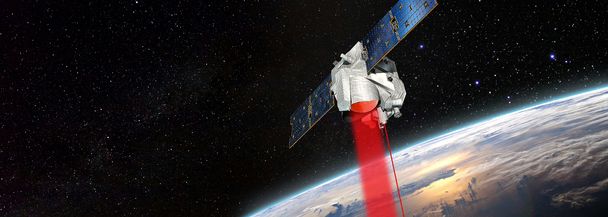A great start to 2017 for ENS!

Summary
- Hot on the heels of a major contract, with the signature of the Merlin instrument, we highlight some successes from the past year and look at what lies ahead with Space Systems’ Head of Earth Observation, Navigation & Science (ENS), Michael Menking.
Michael, having just held your ENS Symposium, I imagine you’ve had the opportunity to look at recent and future highlights with many colleagues?
Absolutely, the Symposium is about acting as one team – engineers, business development and project staff come together to maintain an overview on where we are and where we are going. It is especially important for us to look at our development and innovation projects and have the time to network.
What for you stands out about last year?
Rosetta has to be my first highlight. Never before have we landed a probe on a comet, especially one not designed to do so; not only did we capture the world’s imagination, but the scientific community and general public are seriously impressed by what we achieved. We have shown that Airbus is able to build products at the cutting edge of technology.Then you look at GAIA, it’s such a great project. We are mapping 1.3 billion stars, and providing data for scientists to study for a decade or more to come.
Another mission I’m excited about is LISA Pathfinder – our satellite is helping prove Einstein’s theories on gravitational waves and the complexity involved in building such a highly precise satellite is mind-blowing! It’s working so well that the mission lifetime has already been extended.
These are but a few highlights from a wealth of 38 satellites operating in orbit and 41 in development, that’s some infrastructure!
The ENS teams have done a great job to make 2016 a success and I am convinced that we will do the same in 2017
Michael Menking, Space Systems’ Head of Earth Observation, Navigation & Science (ENS)
And the year ahead?
Of course, launches are always the most visible milestones, and this year we have five to look forward to. On 7 March the Sentinel-2B optical imaging satellite will join its Sentinel-2A pair to significantly reduce revisit times, while another Copernicus programme satellite, Sentinel-5 Precursor, will lift off in the middle of the year to provide atmospheric chemistry data to improve climate monitoring.Three more launches are foreseen towards the end of the year: the Spanish PAZ radar imaging satellite is set to complement the TerraSAR-X/TanDEM-X constellation ; the Grace Follow-On satellites will start mapping the Earth’s gravity field to a remarkable degree of accuracy, giving an insight into the materials and fluids underneath the Earth’s surface and finally Aeolus, the first space mission to acquire profiles of the wind on a global scale in order to improve the accuracy of climate prediction and our knowledge of climate variability.
In the projects we continue to work on some exciting missions. The Biomass team is working on the final design and looking towards their Critical Design Review. In JUICE we have the challenge to reach Jupiter and design a spacecraft to survive the outer solar system. Two more of our science missions have reached the testing phase and we look forward to seeing the completion of Solar Orbiter and BepiColombo next year.
Our new contract signature last week is an exciting project. The Merlin programme is a joint project between CNES and DLR and we are very pleased that Airbus Toulouse is the prime contractor for the satellite, and Airbus Friedrichshafen are providing the instrument. Merlin will measure in the atmosphere and this is the third LIDAR instrument that Airbus will deliver.